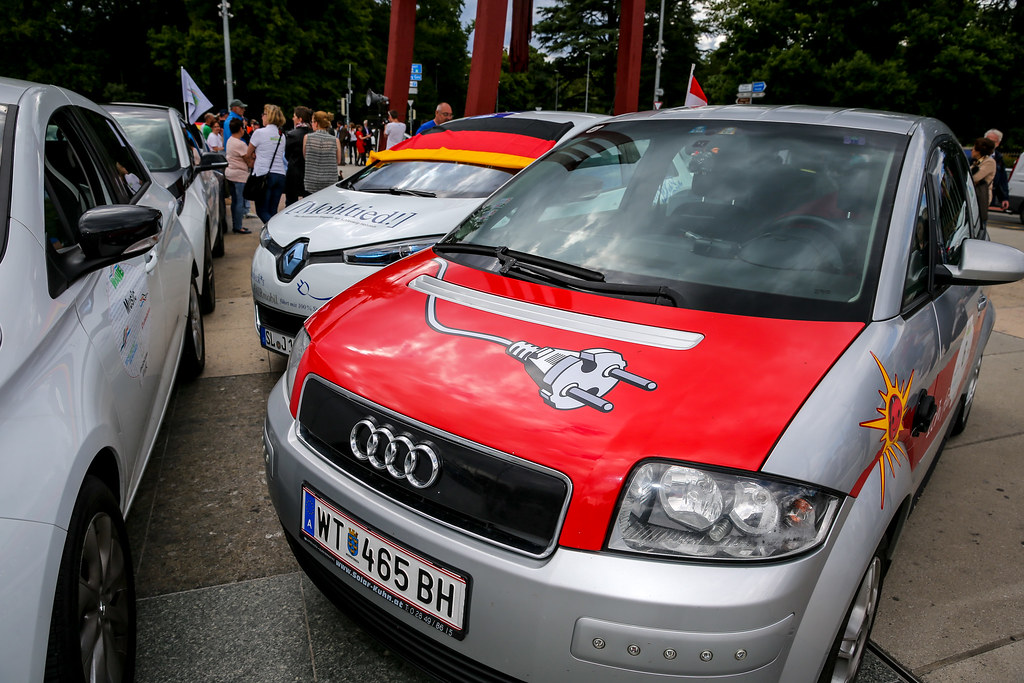http://e-info.org.tw/node/118447
借鏡福斯醜聞 歐盟訂後2020年小型車排放標準
摘譯自2016年8月31日ENS比利時,布魯塞爾報導;姜唯編譯;蔡麗伶審校
繼去年的福斯汽車排放資料造假事件,隨著全球加速轉型低碳、循環經濟,歐盟執委會目前正在制定後2020年的小型車排放標準,以加速導入低排放甚至零排放車輛,做為新運輸策略的重心之一。

歐盟訂新運輸策略 鼓勵轉型低排放
新運輸策略的另一個重點是加速導入生質燃料、電力、水力和再生合成燃料,以及消除電動運輸發展的障礙。透過數位科技、智慧定價增加整體運輸系統效率,並鼓勵轉型低排放運輸模式。
歐盟執委會在7月給歐洲議會、理事會、歐洲經濟和社會委員會和區域委員會的一份通報中宣布,新運輸策略旨在確保歐洲競爭力,並快速反應逐漸增加的人和商品運輸需求。
通報中寫道,低碳運輸策略「應被視為現代化歐洲經濟、強化內需市場的工具之一」。
電動車標準化 充電插頭規格統一
執委會正在能源和運輸系統之間尋找取得更佳綜效的方式,讓電動車充電更容易也更有效率。
和替代能源基礎設施指令相同,成員國必須採用統一標準,包括統一的充電插頭規格,並架設替代燃料的基礎設施。同時執委會也與成員國和歐洲標準化組織合作,持續改善電動運輸的相容性和標準化。
執委會表示將整理出簡單易懂的電動、傳統與其他替代燃料的定價比較資料。
福斯醜聞借鏡 後2020年小型車排放標準制定中
去年發生福斯汽車排放資料造假事件後,執委會已經改善了部分車輛排放驗證作業辦法。「這是確保標準有實質作用、可以被消費者信賴的重要前置作業。」執委會說。
傳統內燃機引擎的排放將在2020年後進一步調降,目前執委會正在制定後2020年的小型車排放標準,同時針對這個議題的立法架構啟動公眾諮詢。
執委會正在修改乾淨車輛指令,欲改善車輛資料透明度,並重新審閱汽車標示指令和公共採購規則的激勵機制。這將能有效支持零排放都會區巴士的部署。
大型車碳排可觀 歐盟要建立監控系統
執委會將加速減少大型車的碳排。目前大型車碳排佔道路運輸碳排的1/4,而且比例將持續升高。
雖然大型車的空氣污染標準和小型車一樣,現在也需要在真實道路駕駛情境中符合標準,歐盟尚未為大型車建立燃料效率標準和碳排監控系統。美國、中國、日本和加拿大已經有相關的標準,亦有部分歐洲車廠加入這些標準的認證工作。
對此執委會廣邀各界參與碳排監控舉報系統的公眾諮詢,同時也尋求針對排放標準的建言。
Europe Charts New Strategy for Low-Emission Mobility
The accelerating global shift towards low-carbon, circular economies has started, driving Europe’s need to accelerate the transition towards low-emission and zero-emission vehicles – a central pillar of the European Commission’s new mobility strategy.
Speeding up the deployment of advanced biofuels, electricity, hydrogen and renewable synthetic fuels and removing obstacles to the electrification of transport is another pillar forming the structure of the new strategy.
Increasing the efficiency of the entire transport system through digital technologies, smart pricing and further encouraging the shift to lower emission transport modes.
Announced in July in a Communication from the Commission to the European Parliament, the Council, the European Economic and Social Committee and the Committee of the Regions, the new strategy is intended to ensure Europe stays competitive and responsive to the increasing mobility needs of people and goods.
The low-emission mobility strategy “should be seen as one of the tools to modernise the European economy and strengthen its Internal Market,” the Commission said in a statement on July 20.
The Commission is looking into better synergies between the energy and transport systems to make charging of electric vehicles easier and more efficient.
In accordance with Directive on alternative fuel infrastructure , Member States are required to implement common standards, including a common plug for electric vehicles, and roll out infrastructure for alternative fuels.
In co-operation with Member States and the European Standardisation Organisations, the work on better interoperability and standardization for electro-mobility continues.
The Commission said it intends to develop a method for easy price comparison of electricity and other conventional and alternative fuels.
The Commission has already implemented some important improvements on how vehicle emissions are measured and verified. “This is a necessary precondition to ensure that standards have an impact and that consumers can trust them,” said the Commission in the wake of the VW defeat device scandal last year, during which the automaker was caught cheating on emissions tests in the United States.
Emissions from conventional combustion engines will need to be further reduced after 2020, so the Commission is working on post-2020 standards for cars and vans.
Together with this new strategy, the Commission is launching a public consultation to revise the current legislative framework for post-2020 emissions standards for cars and vans.
The Commission is working on improving customer information, reviewing the Car Labelling Directive and the incentives in public procurement rules, in the context of a revision of the Clean Vehicles Directive.
This can be a powerful tool to support deployment, for example, of zero-emission city buses.
The Commission will accelerate work to curb carbon dioxide emissions from lorries, or heavy haul freight trucks, buses and coaches. They currently represent around a quarter of road transport carbon dioxide emissions and their share is projected to grow.
While lorries, buses and coaches have been subject to similar air pollution standards as cars and vans, and are now required to meet them under real driving conditions, the EU has neither fuel efficiency standards for them, nor a system to monitor their carbon dioxide emissions.
Other parts of the world, such as the United States, China, Japan and Canada, have already introduced standards, and some European auto manufacturers participate in these schemes.
Together with this strategy, the Commission invites participation in a public consultation, which focuses on monitoring and reporting of emissions, but also seeks first feedback on standards.
※ 全文及圖片詳見:ENS

沒有留言:
張貼留言